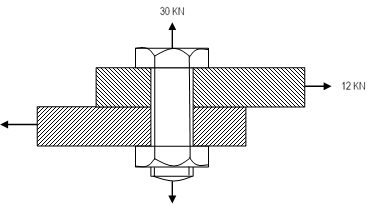- HSC Level 2/3 Unit 012 Assignment: Care Worker Responsibilities and Ways of Working
- CIPD Level 5HR03 Assignment: Understanding Reward Approaches and Their Impact on Performance and Contribution
- CIPD level 5HR02 Assignment: Talent Management and Workforce Planning Unit Guide
- Level 3 D/615/3823 Assignment: Regulation, Protection, and Collaborative Practice in Health and Social Care
- PGM216D Assignment: Bicycle Store Sales Management Application
- MATH6033 Assignment: Epidemiological Investigation of Cardiovascular Health and Tea Consumption Risks
- EH6147 Assingment: Stakeholder Analysis for Quality Improvement in Hand Hygiene Compliance
- Assignment: Investigation of Solution Concentration Through Standard Preparation, Titration, and Colorimetry Techniques
- MATH6033 Assignment: Cardiovascular Risk and Tea Drinking: Epidemiological Analyses
- CIPD level 3 3CO03 Assignment: Core behaviours for people professionals
- DAC4B1: Personal development in adult care settings
- Unit 19 Research Project Assignment 1: Impact of Corporate Social Responsibility on Business Success & Community Wellness
- EG5022 Assignment: Georeferencing and Accuracy Assessment of a Quarry 3D Model Using Photogrammetric GCPs
- Assignment: Financial Performance and Strategic Analysis of a UK Listed Company: A CORE Evaluation and Reflective Review
- 5CNMN002W Assignment: Advanced measurement- Major measurement taking off
- K/650/2298 Level 3 Understanding Roles, Responsibilities, and Effective Partnerships in Health and Social Care
- Understanding Information and Knowledge Management in the Workplace: A Briefing for HR Professionals
- HRM7010D Strategic Use of People Analytics in Enhancing Organisational Value and Agility
- TOWN1060 Urban Planning in the UK History Sustainable Design and Future City Development
- OTHM Level 5: J/650/1143 Research Methods in Health and Social Care
Pearson BTEC Level 3 Unit 8 Mechanical Principles of Engineering Systems : Statics, Assignment, UK
| Subject | Statics Assignment' |
Vocational Scenario or Context
The use and application of mechanical systems is an essential part of modern life. The design, manufacture and maintenance of these systems are the concern of engineers and technicians who must be able to apply a blend of practical and theoretical knowledge to ensure that systems work safely and efficiently. Science underpins all aspects of engineering and a sound understanding of its principles is essential for anyone seeking to become an engineer. Having completed learning outcome LO8.1 of Mechanical Principles of Engineering Systems in your course at Newham College, you are required by your employer to demonstrate your understanding in effects of loading in static engineering systems particularly effects of mechanical force on solids. To do this complete the tasks below.
Task 1
Statics
Calculate the magnitude, direction and position of the resultant force and turning moment about point for the system of forces acting on the bridge support plate shown in figure 1. What would be the equilibrant force and its direction? P1

Figure 1 Bridge support plate
Task 2
Simply supported beam Calculate the support reactions for the roof beam shown figure 2. The uniformly distributed load (UDL) is across the whole length of the beam. P2 Figure 2 Roof beam

Figure 2 Roof beam
Task 3
- Component subjected to direct uniaxial loading
The rectangular steel bar, figure 3 is part of a static test rig and extends under a tensile load of kN. If the elastic modulus for the steel material is 208 GN/m2, calculate:
- the stress in the bar,
- the resulting strain, and
- the extension of the bar. P3

- Component subjected to shear loading
A rivet which has a diameter D mm is being used to hold together the sides of a storage vessel and is subject to the loadings shown in the figure 4. Calculate:
- the resulting shear stress
- the resulting shear strain if the shear modulus for the rivet material is 79 GN/m2. P3

Figure 4 Loads on a rivet holding together a storage vessel
- The diagram in figure 5 shows the section through part of a car trailer and the corresponding loading. The failure criteria for the diameter high tensile bolt shown is:
Calculate the maximum permissible factor of safety for the working conditions detailed. M1

P3 calculate the induced direct stress, strain and dimensional change in a component subjected to direct uniaxial loading and the shear stress and strain in a component subjected to shear loading
M1 calculate the factor of safety in operation for a component subjected to combined direct and shear loading against given failure criteria
Are You Looking for Answer of This Assignment or Essay
Are you seeking assignment help UK for your statistics course? Our dedicated team offers comprehensive help with BTEC assignments, including expert Statistics Assignment Help online. UK students can pay our experts for customized assistance tailored to their needs. Enjoy affordable, high-quality services with 100% human-written assignments—no AI involved. We promise A+ results, on-time delivery, and plagiarism-free content. Don’t let your statistics assignment overwhelm you; reach out for professional support and achieve academic success today!



